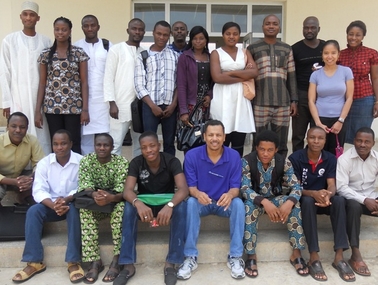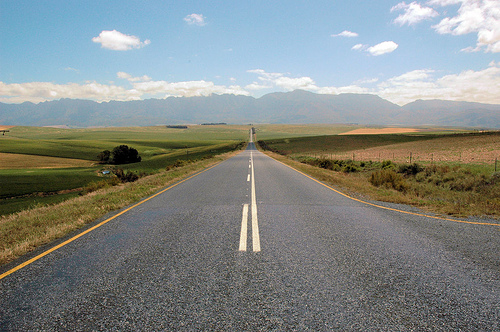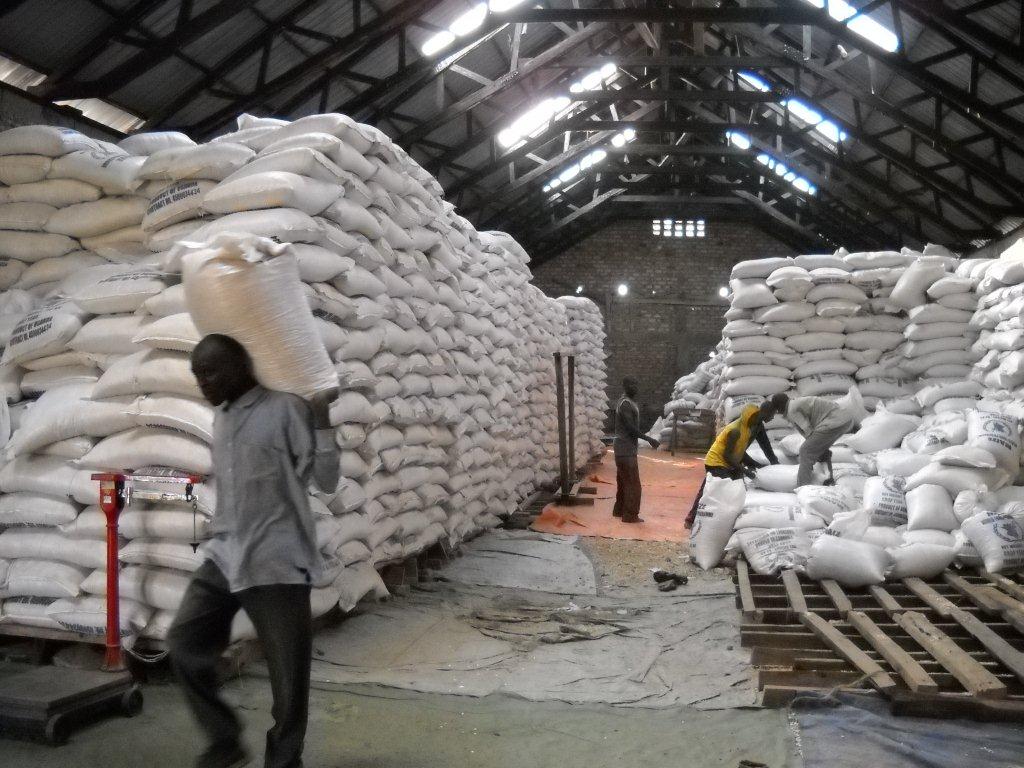With thanks to input from Calestous Juma, Professor of the Practice of International Development, Harvard Kennedy School and author of New Harvest: Agricultural innovation in Africa
Poor infrastructure in Africa is often listed as one of the major challenges to agricultural growth and development for the continent.
Less than 50% of the rural population lives close to adequate roads, which poses difficulty for farmers transporting inputs and produce. This coupled with poor storage facilities in the continent, leads to post-harvest losses with the US Department of State predicting that nearly one-third of global agricultural production either arrives in poor condition or never makes it to the consumer at all.
This waste is extremely detrimental to food security. With the global population estimated to reach nine billion by 2050, farmers will have to produce 70% more food. On top of this, we are still failing to feed the current population, with the World Food Programme estimating that just under one billion people going to bed hungry every day.
Evidently, the issue of infrastructure is one that urgently needs to be addressed if we are to solve some of the world’s biggest challenges and cut the unnecessary waste at farm level.
Farming as a Business
Investments in infrastructure can provide an opportunity for developing countries to meet demands for food and also can offer smallholder farmers a chance to make a healthy living from agriculture. Professor Calestous Juma, Faculty Chair of Harvard Kennedy School, suggests that one way to enhance infrastructure in the continent is to “support small scale farmers by viewing them as entrepreneurs, not just producers.”
“Farmers should be granted similar credit services as entrepreneurs in urban areas to enable them to build proper storage facilities and infrastructure that will enable them to access markets and develop a credible business.”
Sufficient roads between farms, towns and cities are particularly important in enabling farmers to transform farming into a business. Roads can link farmers to vital inputs; such as seeds and fertilizers whilst also offering them access to competitive markets where they have the opportunity to sell produce for a better price than may be available at a local level.
Urgent Investments Needed
In his book, New Harvest: Agricultural innovation in Africa, Professor Juma states that “urgent investment in rural infrastructure” is needed to address food shortages in the continent. Poor infrastructure, such as transportation, energy and communication technology, hampers the ability for Africa to sustain economic growth and meet sustainable development objectives.
Many obstacles prevent the improvement of infrastructure, such as the funding of new roads and bridges across the continent. Professor Juma lists “high upfront costs” as one of the biggest barriers, as even the foundations of most of Africa’s infrastructure still need to be put in place. It is estimated that Africa will need nearly US$500 billion over the next decade to finance infrastructure projects.
The UK’s Department for International Development (DfID) recognised the need to invest in infrastructure to aid agricultural development, as they pledged an investment of $1.2 billion to upgrade 4,000 kilometres of road and 600 kilometres of rail track in parts of eastern and southern Africa. In association with the Infrastructure Consortium for Africa, the project involves work in Botswana, Democratic Republic of Congo, Malawi, Mozambique, South Africa, Tanzania, Zambia and Zimbabwe to free up bottlenecks in shipping and transporation. Read more about the project in Farming First’s case study
In addition to this, USAid launched the Africa Infrastructure Program (AIP) in 2008, which supports the development of clean and cost-competitive energy projects in sub-Saharan Africa. The project works across the continent to build capacity for renewable energy to replace existing unreliable sources. For example, in Kenya hydropower was vulnerable to declining rainfall and failing to provide sufficient energy for the country, in response the AIP aided the Lake Turkana Wind Project, taking advantage of the high wind speeds found in the Turkana low jet stream corridor to construct 353 wind turbines of 850 KW each. Find out more about the AIP here
A Unique Opportunity to Re-Design
To survive within a world that thrives on international trade Africa needs to ensure that it’s roads, railways and airports are helping and not hindering the link between the continent and global markets. Employing the latest technologies to ensure that travel times on railways are shorter or that airports are linked sufficiently with local towns and cities will give Africa the opportunity to compete with developed global markets.
Reliable transportation in rural areas is critical for growth to connect farmers to markets and social service networks. Interestingly, Juma notes how investment in rural roads, as opposed to highways, has a higher benefit-cost ratio. Particularly in areas like sub-Saharan Africa, where a 70% of the population reside in rural towns and villages, these roads can link farmers and their produce to profitable markets.
Not only is there opportunity for Africa to place farmers at the forefront of infrastructure design but, as the Lake Turkana Wind Project above demonstrates, there is also a unique opportunity to process energy from eco-friendly solutions. These solutions tend to be cost effective and offer the continent a chance to become a leader in sustainable energy sourcing.

Arizona State University engineering professor Terry Alford poses with students from the Structure and Characterization of Materials class he taught at the African University of Science and Technology in Nigeria.
Speaking to Farming First Professor Juma also notes the opportunity to enhance engineering education in the continent:
“With strategic vision, investing in infrastructure will also stimulate engineering education. African countries need to train the next generation of engineers to build and maintain infrastructure.
“The requirement to include training in engineering should be a performance standard in all infrastructure projects and can be enforced by institutions such as the African Development Bank as well as local ministries responsive for infrastructure development. Pursuing such strategies will enhance the impact of African agricultural development on wider industrial activities as engineering skills from this foundational sector start to diffuse into the rest of the economy.”
Aligning Infrastructure with Global Development
The agriculture sector is highly dependent on energy, telecommunications, water security and transportation and so there is a close alignment between improving infrastructure and global development.
If farmers in the continent are to produce enough food to feed a growing population, whilst also sustaining a living from agriculture, sufficient infrastructure needs to be in place. Infrastructure can connect farmers with global markets, linking them to the inputs needed for the sector to survive.
Read Farming First’s policy on building infrastructure in Africa and providing farmers with local access and capacity here


